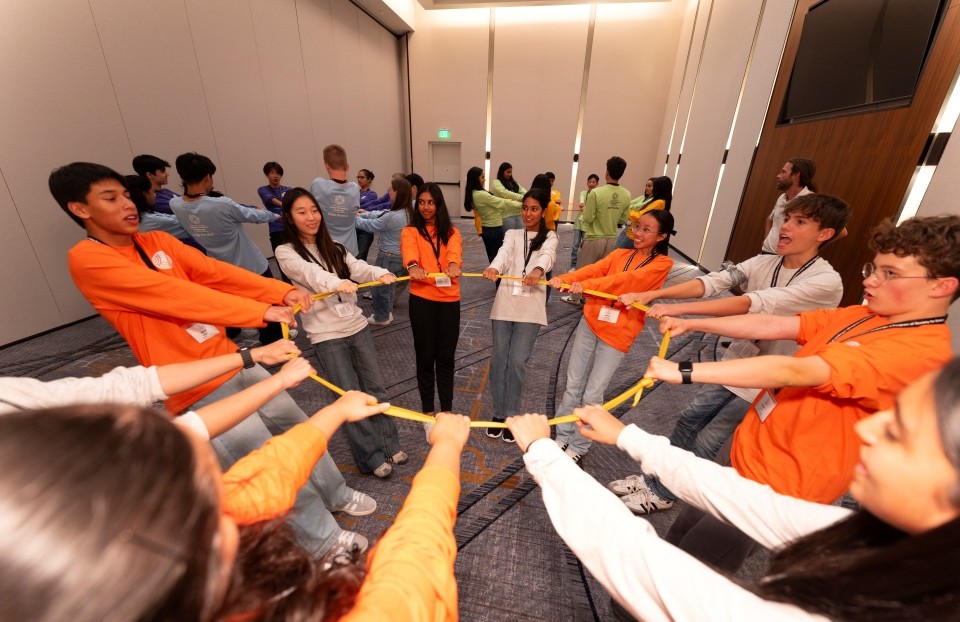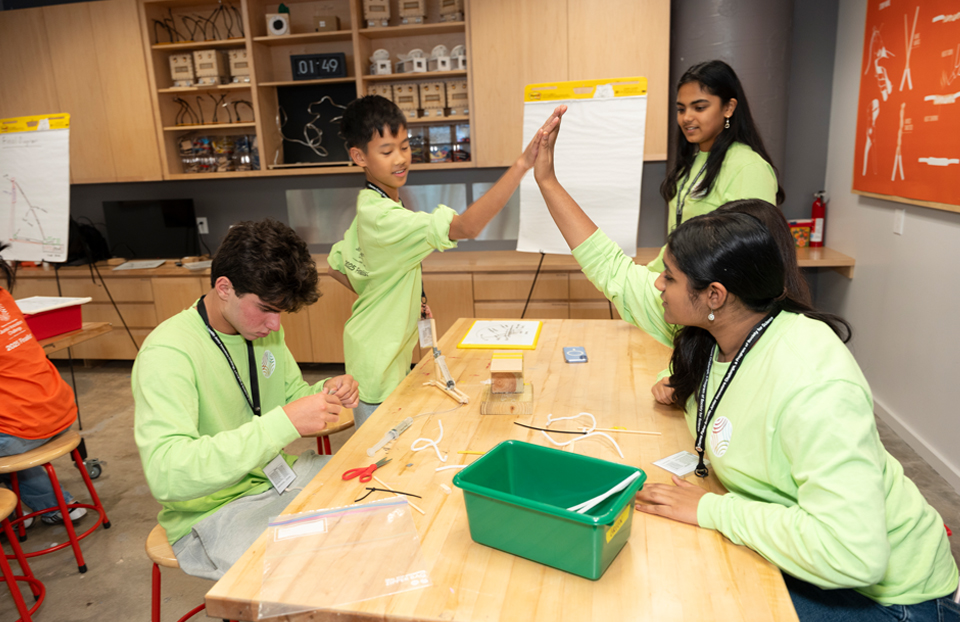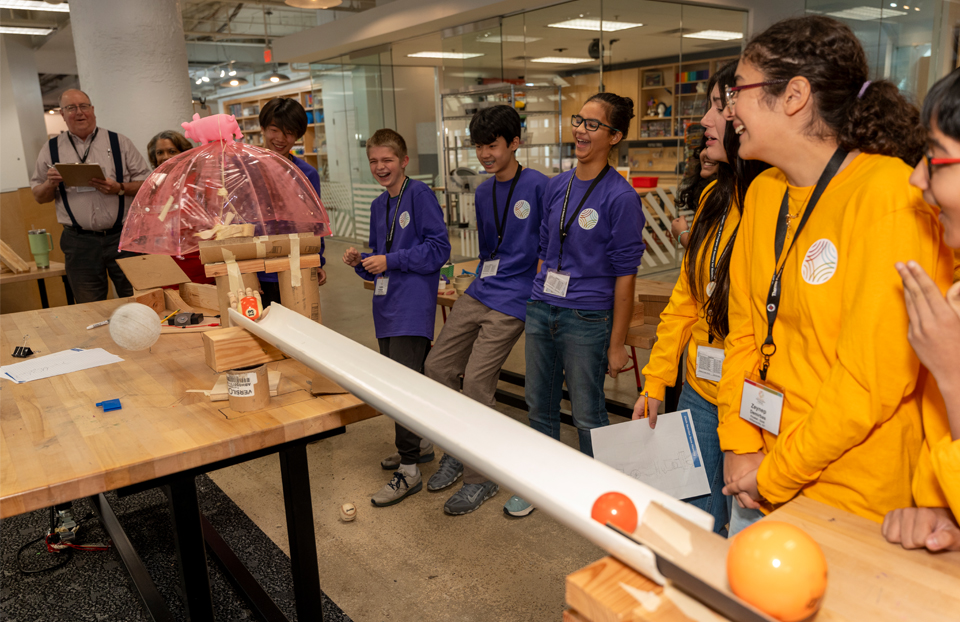Five Questions with Gary Montelongo, the winner of the $10K Broadcom Coding with Commitment Award in the 2024 Thermo Fisher JIC
When Gary Montelongo, 14, of La Joya, Texas was growing up, his mother Nancy worked as a research teacher at The University of Texas Rio Grande Valley (UTRGV). As she led her classes, Gary quietly became her unofficial teaching assistant, sitting in on lessons, wandering through the university’s buzzing labs, and even helping high schoolers learn to code. I grew up in a single-family home.
“My mom, who is a teacher, was always busy preparing for work and meeting our needs. My dad walked out when I was eight and left a void that was often filled by my mother’s love and dedication to us. While she worked constantly to provide for us, she kept me busy with Star Wars, Legos, and Minecraft.”
These childhood games provided Gary with a sanctuary, offering him peace and a distraction from the fact that his dad wasn’t there. “As I grew older in the adventures of galaxies far away and pixeled worlds, I became curious about life in space and how programming worked in Minecraft.” I guess this is where my love for science grew. His mother encouraged his curiosity and encouraged Gary to continue learning everything that science and math offered
“He not only joined many of my classes, learning alongside the students, but he also taught coding to some of the high school students himself,” his mother Nancy recalls.
A sense of wonder and curiosity led him to opportunities, including an internship at the Railway Safety program, where he worked on projects related to train safety and derailment.
For his project in the Thermo Fisher JIC, Gary used his coding and engineering skills to build models of train suspension systems, studying how vibrations from springs and uneven weight distribution could lead to derailments. Inspired in part by the 2023 East Palestine train accident, Gary set out to understand how mechanical factors like spring stiffness and unbalanced loads affect a train’s stability. His time working alongside engineers showed him that even the smallest design decisions—like how a suspension system absorbs shock—can make the difference between a smooth ride and a major accident.
Through this project, Gary transformed his curiosity into a meaningful pursuit: creating safer, more resilient railway systems. For his project Gary won the $10,000 Broadcom Coding with Commitment® Award for combining expert STEM knowledge and passion for helping or improving one’s community through coding. Let’s hear more from Gary below!
What was a challenging moment you faced while working on your project, and how did you get through it?
One of the biggest challenges was testing how unbalanced loads affect train derailments. I had to simulate real-life train conditions using different spring stiffness levels, and it was difficult to create a realistic model that accurately measured vibrations. Sometimes, the toy train would derail too soon, or the data from the accelerometer wouldn’t be consistent. I overcame this by making small adjustments—testing different spring sizes, refining my coding, and analyzing my results carefully. I also reached out to engineers for advice. Their guidance helped me troubleshoot problems, and in the end, I gathered meaningful data for my research.
Was there a specific “aha moment” when you realized you were on the verge of solving your research problem?
Yes! My “aha moment” came when I analyzed the accelerometer data and saw a clear pattern between spring stiffness and derailment risk. I noticed that weaker springs, representing the end of their life cycle, couldn’t handle unbalanced loads, leading to instability. It was exciting because it confirmed my hypothesis! The moment I saw the numbers match my predictions, I knew I was onto something important. It showed me how railway engineers could use this information to improve train suspension designs and reduce derailments. That breakthrough made me realize how my research could have real-world applications in railway safety.
What’s one of the most memorable or surprising experiences from your Thermo Fisher JIC journey?
Connecting with other students who shared my passion for STEM was unforgettable. I met people from all over the country, each with unique research projects. It was amazing to exchange ideas and see how different fields of science connect. The most surprising moment was realizing how much I had in common with my peers—many of us spent hours in workshops, coding labs, or testing experiments at home. It was inspiring to be part of a community that values innovation. The experience reassured me that I belong in STEM and that my work can contribute to something bigger. We are still in constant communication and I recently met up with some of them at our State fair.
Can you share a special moment from the competition week? What was your most memorable experience?
Being named one of the top winners was my favorite moment. It was a surprise because all my friends had awesome and unique projects, and I wasn’t sure if mine stood out. When I heard my name called, I felt a mix of shock and excitement, I kind of sat for a while before realizing it was my name they had called out. It reassured me that my time spent learning about train components at the railway shop had made all the difference. It also made me feel like I was on the right path to improving railway safety. Knowing that my research had real-world applications made the hard work and late nights worth it.
If you could join forces with any fictional STEM genius, like a character from a science-themed TV show, who would it be, and what groundbreaking project would you collaborate on?
I would love to work with Anakin Skywalker from Star Wars. He was a genius when it came to mechanics and engineering. Together, we could design a revolutionary suspension system for space travel, applying train mechanics to spacecraft landings. Trains use suspension systems to handle vibrations and weight distribution, and a similar concept could improve spacecraft safety when landing on different planetary surfaces. We could also create hover-train technology for space colonies! The idea of using mechanical engineering principles from trains to make space travel more efficient and safer is exciting, and I think Anakin would be the perfect partner.
What’s something fun you love to do outside of science?
Outside of science, I love playing baseball, football, and wrestling. Baseball and football challenge me physically and mentally, teaching me about teamwork, strategy, and resilience. Wrestling pushes me to be disciplined and focused, which helps me in my research as well. These sports have also deepened my understanding of physics, like how force, balance, and motion affect performance. Beyond sports, I enjoy spending time with my family and friends, whether it’s playing games, watching movies, or working on hands-on projects. Science is a huge part of my life, but staying active and having fun keeps me balanced and motivated.
The Thermo Fisher JIC application is due on June 11, 2025 at 8p.m. ET. If you are a nominee, you can check out the application here: https://thermofisherjic.smapply.org/


